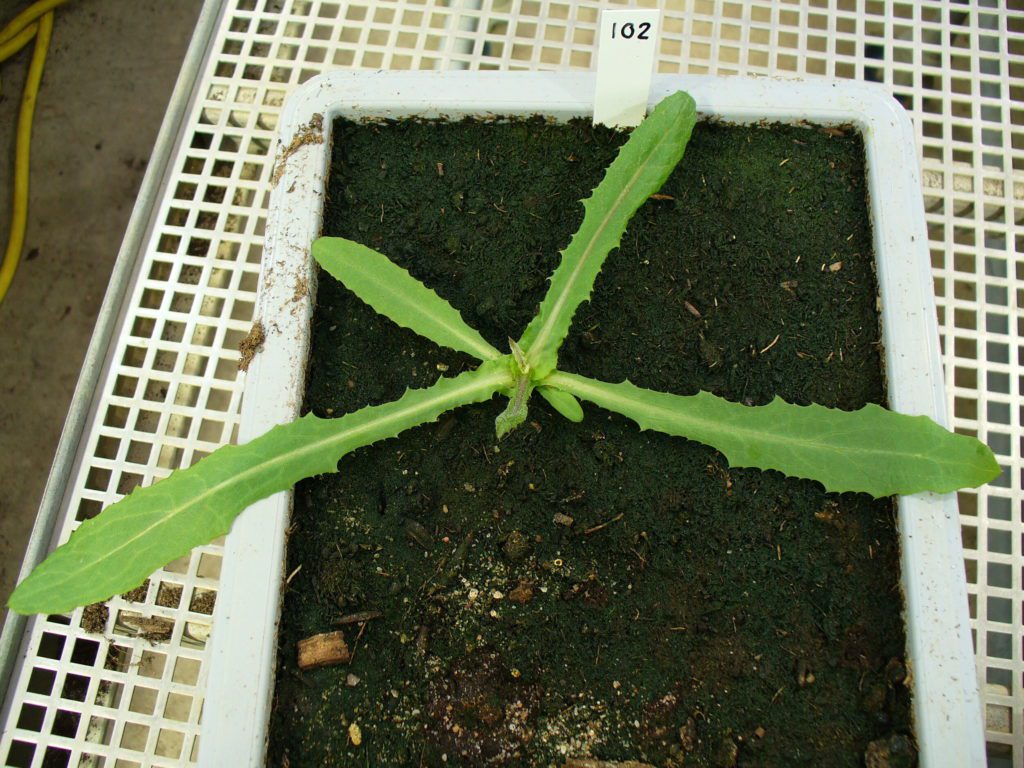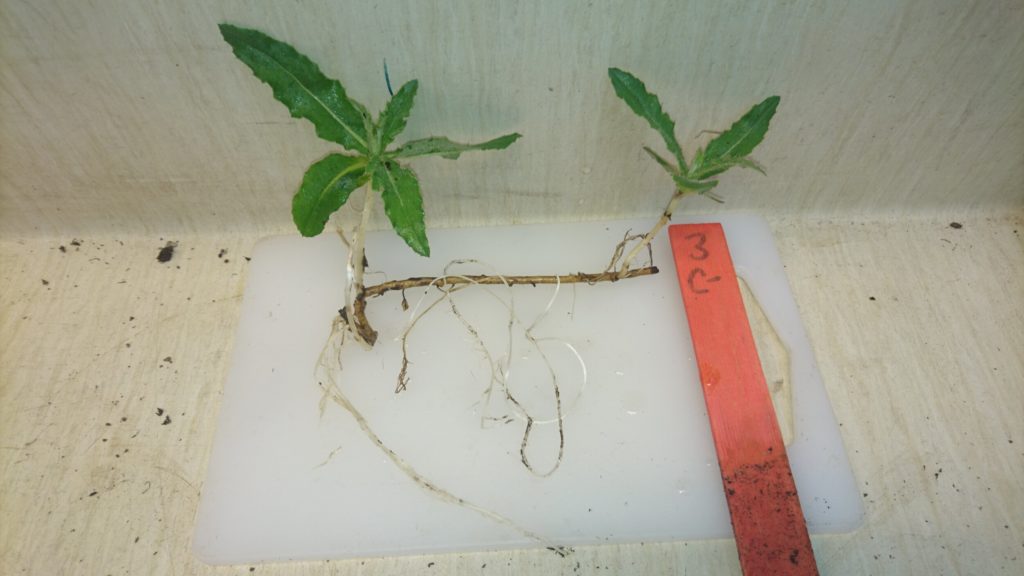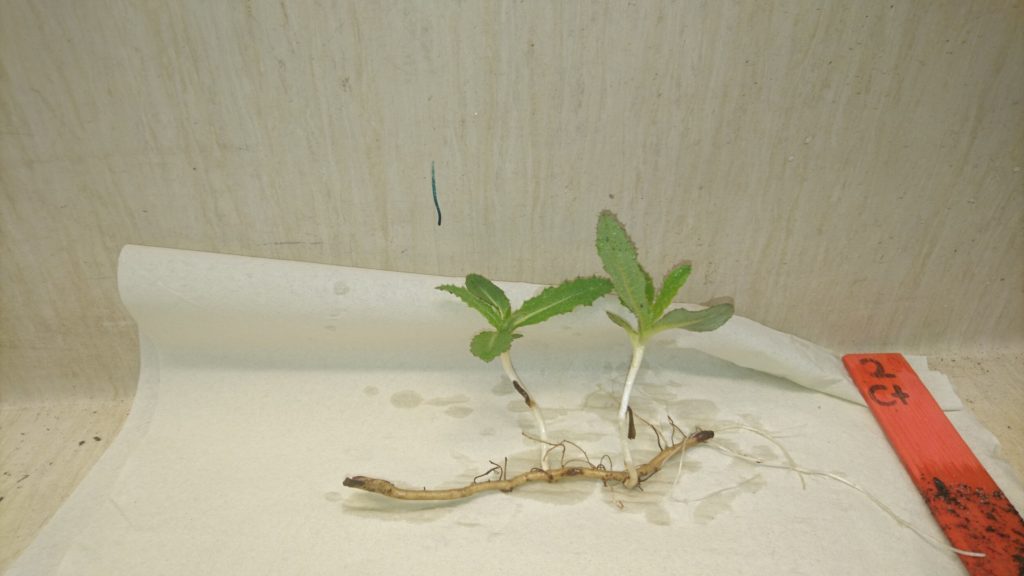New compensation point for thistle and sowthistle
Perennial weeds are most efficiently controlled at their compensation point, which means that photosynthesis and cell breathing are equal, and the nutrient stored in the root system is used to support the above-ground parts of the plant. At that point, the dry matter of the root system is at its lowest, the resilience to mechanical control is low and there is a depleting effect on the weed if it´s cut or damaged in any way. For a long time, it has been told, that the compensation points on some of our most important perennial weeds is 8-10 leaves on thistle, 5-7 leaves on sowthistle and 3-4 leaves on quackgrass. According to scientists at the Swedish University of Agricultural Science (SLU) there are signs that tells us that the compensation points occur much earlier than that.
Early control
In the last ten years, several box and field trials has been carried out at SLU to evaluate compensations points of different weeds, chemical versus mechanical control and selective cutting with Combcut. The scientists have been looking mostly at thistle and sow thistle, but quackgrass was added to the trials in 2017. The results show that sowthistle reaches its lowest below-ground biomass at the 4-5-leaf stage and that the compensation point of the thistle happens before the three-leaf stage. Preliminary results tell us that quackgrass is the same, and its compensation point seems to occur before the development of three leaves.
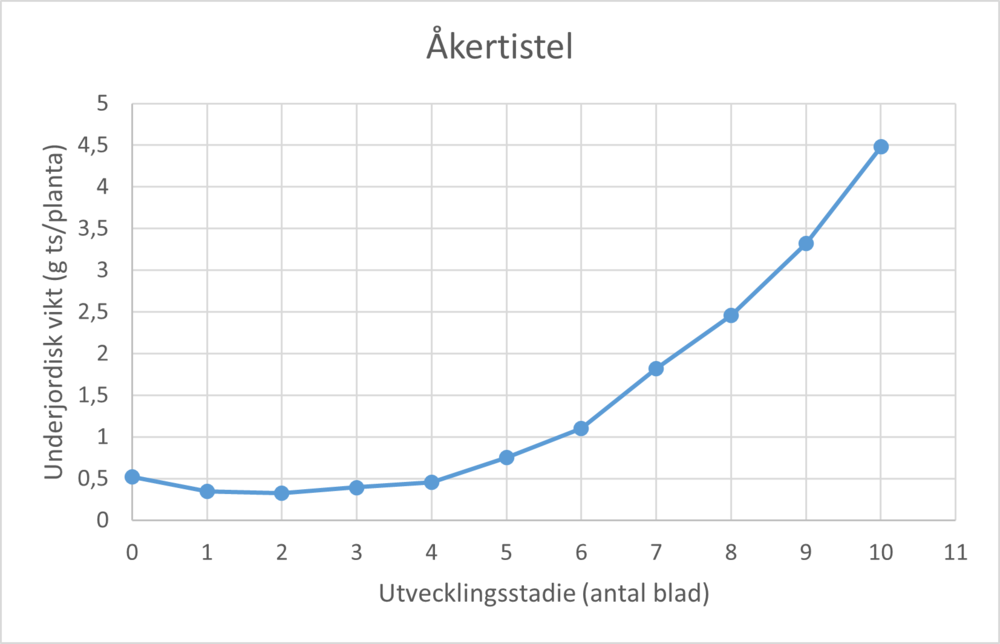
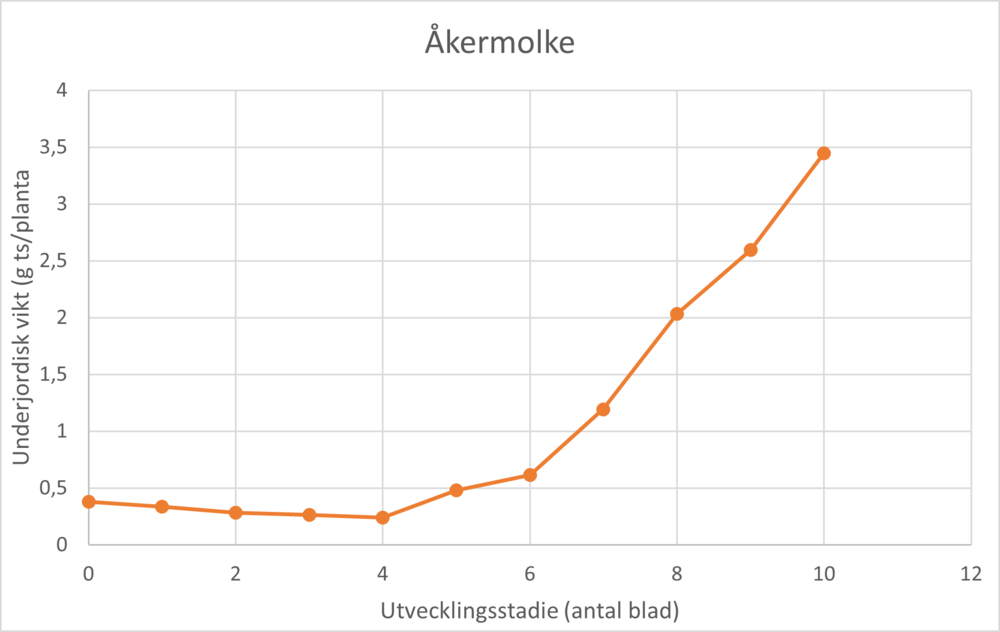
The compensation point of the thistle occurs when it has developed 2-3 leaves and for sowthistle it happens before the 5-leaf stage. At that point, the weeds has reached their lowest below ground weight and are sensitive to mechanical control such as with Kvickfinn, or other treatments. The pictures below show how sowthistle and thistle looks at their compensation points. Photo: Varwi Jacob Tavaziva
Lift up the roots…
The very best diagnosis method when it comes to weeds, is to go out in the field and evaluate. How does it look? How big are the weeds? To combat perennial weeds such as thistle, sowthistle and quackgrass, and get a long-term effect, it´s ideal to fight them at their compensation point. When the roots are being cut off, lifted and placed on the surface there will be a depleting effect on the root system and the infection will decrease as time goes by. 1-2 passages with Kvickfinn in the spring before sowing will give you a nice tilling of the surface and good effects on perennial weeds. If you have big problems with perennial weeds, an intensive early summer fallow of 6-8 week with 3-4 passages before sowing a catch crop, might be more effective.
… or cut off the thistle
To cut off thistles with our Combcut at their compensation point will not work since the thistle is to close to the ground at that point.Therefore, we recommend driving as soon as the weeds has stretched.
A later passage has also shown good effects. According to an evaluation of Combcut made by SLU, it works perfectly well to drive later and decrease the below-ground biomass of the weed. In this case, the competition from the crop, plays a huge part. In the figure below it shows that the treatments J-L (J= early cut, K=late cut, L= early + late cut) combined with the strong competition from spring barley gives us the best results. Just the cut decreased the below-ground biomass of thistles with 18-36% but combined with a crop it declined with an additional 71-82 %.
“The thistle is most sensitive to mechanical control at its 2-3-leaf stage – the compensation point. It´s not possible to use the Combcut until the thistle has stretched, and this makes you miss the compensation point. Combcutting at a later stage still makes the thistle weaker since it is forced to use resources from the root system to produce above ground biomass. If you manage to establish a competitive cereal crop the thistle will be even more diminished. ”
— ANNELI LUNDKVIST, Swedish university of Agricultural Science, SLU, Uppsala
Might match up with MCPA
Combcut has been studied in several research projects at SLU and has shown good effects on thistle. So, repeated cutting has an established depleting effect on thistles. A mechanical treatment with Combcut at the right moment could even give an equivalent effect on the thistles´ growth and development as a chemical treatment with MCPA. Mechanical weed control is not a quick fix, it takes repetition when the weed sprouts gradually.
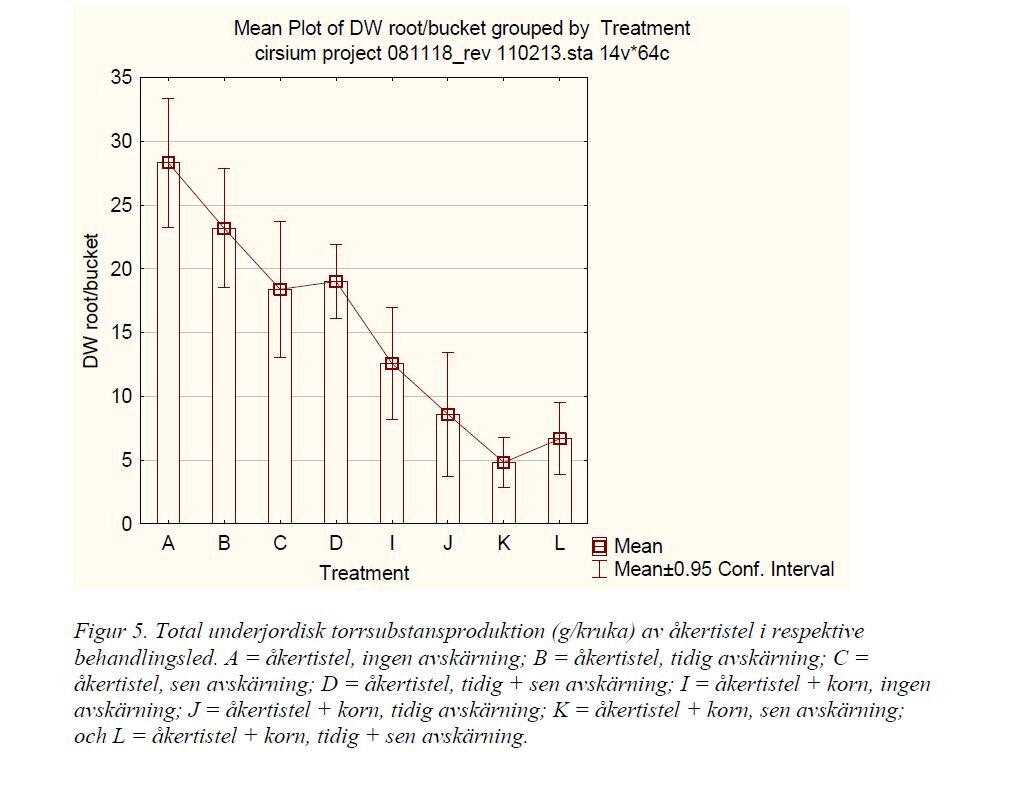
Source: Utvärdering av tistelskärare 2008-2010, SLU Ekoforsk, SLU Uppsala
In brief
- New compensation points:
Thistle – 2-3 leaves
Sowthistle 4-5 leaves - Mechanical weed control of thistle and sowthistle should be done earlier than we think to get a good effect on the root system.
- Make the treatment as early as possible in the weeds developmental stage. Repeted treatments might be needed
- Cutting with Combcut can, with the right timing, compare to chemical weed control.
Want to read more?
- In these reports conclusions are made of the projects where Combcut has been used: https://www.slu.se/globalassets/ew/org/centrb/ekoforsk/resultat-2019/lundkvist_verwijst-slutrapport-2019.pdf, and https://www.slu.se/globalassets/ew/org/centrb/ekoforsk/resultat-2019/lundkvist_verwijst-slutrapport-2019.pdf .
- Anbari, S., Lundkvist, A., Forkman, J. & Verwijst, T. (2016). Effects of root fragmentation on generative reproduction of Sonchus arvensis. Acta Agriculturae Scandinavica, Section B – Soil & Plant Science, vol. 66 (5), pp. 391–398 Taylor & Francis.
- Verwijst, T., Tavaziva, V.J. & Lundkvist, A. (2018). Assessment of the compensation point of Cirsium arvense and effects of competition, root weight and burial depth on below-ground dry weight – leaf stage trajectories. Weed Research p. 292–
- Torssell, B., Eckersten, H., Anbari, S., Lundkvist, A. & Verwijst, T. (2015). Modelling below-ground shoot elongation and emergence time of Sonchus arvensis shoots. Acta Agriculturae Scandinavica, Section B – Soil & Plant Science, vol. 65 (7), pp. 582–588 Taylor & Francis.
- Tavaziva, Varwi Jacob, 2012. Effects of competition on compensation point and phenological development in Sonchus arvensis L. Avancerad nivå, A2E. Uppsala: SLU, Institutionen för växtproduktionsekologi. https://stud.epsilon.slu.se/4572/
- Tavaziva VJ, Lundkvist A, Verwijst T. 2019. Effects of selective cutting and timing of herbicide application on growth and development of Cirsium arvense in spring barley. Weed Research 59, 349–356.
- Verwijst T, Tavaziva VJ, Lundkvist A, 2017. Effects of selective cutting and herbicide use in spring barley on seed production of Cirsium arvense. Acta Agriculturae Scandinavica, Section B – Soil and Plant Science 67, 562–570.
- Tavaziva VJ, Verwijst T, Lundkvist A. 2019. Growth and development of Cirsium arvense in relation to herbicide dose, timing of herbicide application and crop presence. Acta Agriculturae Scandinavica, Section B — Soil & Plant Science, 69, 189–198.

